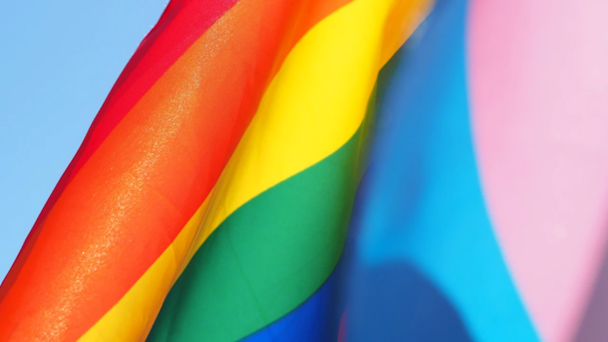Can brands authentically overcome tokenism and rainbow-washing?
The tokenization of marginalized groups for profit is a prevalent issue across the industry. John Beardsworth, partner at MediaCom, weighs in on how it might be resolved.

MediaCom’s joint head of social change hub weighs in on combating tokenism in the ad industry
The question of how a business makes itself ‘more diverse and inclusive’ is one that’s gripped the corporate world over the last decade or so. As modern society has made it possible to hold the spotlight on societal grievances such as racism, homophobia and inequality, consumers are letting their values guide their choice of what brands to support more than ever before.
And this evolution in buying habits is having a tremendous impact on businesses. A recent survey found that global consumers were not only four to six times more likely to buy from a brand that they believe has a ‘strong and clear purpose’, but are also more likely to champion it and recommend it to friends and family.
Clearly, there are strong incentives to be perceived as a socially-conscious business in today’s economy; whether it’s a brand incorporating the iconic rainbow flag into its logo over Pride Month, or ethnically diverse casts calling out civil rights injustices in an advert to win hearts and minds. Yet it’s fair to see these proclamations may not always be genuine or authentic, so accusations of tokenism are necessary and often justified.
So how does a brand create the sort of content that regards diverse communities as ones made up of humans to be marketed to, rather than tools to say something about their own business?
Combating tokenism in the ad industry
While it may be hard to gauge the prevalence of tokenism in the ad industry, there are some revealing stats. For example, a YouGov and Gay Times survey found that only 32% of marketers engage with the LGBT+ community outside of Pride month, despite 84% of LGBT+ consumers calling for it.
This is many businesses’ approach to diversity – usually event-based marketing efforts (such as during Eid or Black History Month) that regard marginalized groups as props rather than as consumers.
It was this exact pitfall that Reebok wanted to avoid with its target audience of 15-24-year-olds – gen Z. Not only does this group identify as the most diverse age demographic there is, it is also the most known for valuing representation in the brands they support. So it was imperative for Reebok to produce work that truly reflected its audience’s experience.
For instance, when trying to support a global Cardi B film set in a nail salon, Reebok wanted to explore nail culture in London’s Black community. So it partnered with GUAP, a youth-led media platform based in the city, to help them steer away from stereotypes and produce content that highlighted different types of people who wouldn’t be immediately associated with the scene.
Other than drawing attention from the media, the campaign led to Reebok’s relationship with GUAP growing. And this perfectly encapsulates Reebok’s philosophy for the last three years toward advertising – placing the focus on the individuals they’re trying to engage and letting that determine how a campaign is formed.
The shifting tide
Tokenism can seem like an entirely subjective issue that’s out of an individual brand’s control. However, there are fundamental changes a brand can do that, while not guaranteeing it’ll never be accused of tokenism, will make it much harder for it to stick.
For instance, if a brand ‘does Pride’ but has not put in place any internal policies to support trans employees in the workplace, or portrays a south Asian family in an ad, yet all the creatives and production team are white, that support is inherently tokenistic. Because while appearing good, the efforts in no way provide real support to those groups.
Following that, they need to ensure the communities represented on screen are similarly represented behind the scenes in the team developing the campaign, and be prepared to bring in a consultative partner if necessary.
Finally, businesses need to begin the work of diversifying their supply chains to ensure opportunities within production are actively offered to people from the communities being represented – everything from media partners right through to hair and make-up jobs. This is inclusive planning – and something we’ve been doing for nearly a year with great success.
This way, brands can begin moving away from using individuals’ lived experience of diversity as a proxy for this type of marketing, and instead create a network of senior, trained, empowered specialists in diverse marketing, who also have lived experience of diversity.
Righting wrongs and finding solutions
And it’s never too late to strive for more authentic and inclusive communications. For instance, Paddy Power released an advert deemed to be transphobic in 2012, which was later banned by the ASA after numerous complaints.
Fast forward to the 2018 World Cup, and its ‘from Russia with equal love’ was the culmination of a more authentic and inclusive approach in this area where the betting company donated £10k to the Attitude Foundation every time Russia scored a goal.
It’s important to remember that Paddy Power’s audience is almost exclusively straight men, and so it has a great opportunity to make a real and positive impact on homophobia in football in a way that media targeting other sexualities may not.
So, while purpose-washing is a challenge that requires multiple solutions, it fundamentally exists because there aren’t enough diverse voices in the room. And there’s no better place to start than fixing that.
John Beardsworth is partner at MediaCom.
